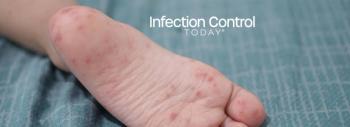
Beyond the Surface: Tackling the Sterilization Challenges of Flexible Endoscopes
Flexible endoscopes revolutionized modern medicine—but their complex design poses persistent sterilization challenges. With mounting infection risks and emerging innovations, experts are rethinking how to clean and safeguard one of health care’s most indispensable tools.
Physicians and scientists in several cultures, including the Egyptians, Arabs, Romans, and Greeks, tried to view body cavities using various instruments.1 The invention of the first endoscope by Phillip Bozzini single-handedly transformed the field of medicine. Modern endoscopy was born with the invention of the fiberoptic endoscope. Physicians were now able to visualize pathology and treat diseases without the need for surgery.
As these endoscopes became routine in everyday medical practice, guidelines were set on the sterilization of these complex medical instruments. Gastrointestinal endoscopes can acquire high levels of microbial contamination during routine use, making it essential to process these instruments before they are used on the next patient.2
Why Are Strict Guidelines Needed in the Sterilization of Flexible Endoscopes?
Flexible endoscopes have been responsible for deaths from health care-associated infections (HAIs), especially antibiotic-resistant infections.3 A study by the Johns Hopkins University revealed that the risk of infections due to flexible endoscopes was:
- One patient per 1000 surgeries for colonoscopy
- Three per 1000 surgeries for upper gastrointestinal endoscopy
Another review by the FDA’s medical device reports attributed 79 deaths from 2015 to 2019 to contaminated duodenoscopes. Due to this higher risk, flexible endoscopes such as duodenoscopes were moved to the critical use category from the semi-critical use category in the Spaulding classification system.4
The high HAIs associated with flexible duodenoscopes, bronchoscopes and colonoscopes are due to difficult-to-clean areas and their complex structure. These difficult-to-reach areas are often overlooked as locations that require attention during sterilization. Moreover, the wear and tear of these endoscopes make it even more challenging to clean them. These endoscopes are sometimes repaired by third-party vendors who may add new materials or parts, which makes it even more challenging to clean.
Biofilms are a common source of infections in medical instruments, with Staphylococcus aureus and Pseudomonas aeruginosa causing most of these infections.4 Proper sterilization and disinfection can break the biofilm, further reducing the risk of transmission of healthcare-associated infections.
Reprocessing of flexible endoscopes
Reprocessing is a multistep process to ensure that endoscopes are free from debris and pathogens.2
The first step in reprocessing is cleaning the instrument. Cleaning involves the physical removal of debris and foreign particles, typically using brushes, detergents, and water under pressure.
The next step is disinfection or sterilization. High-level disinfection is the elimination of many or all microorganisms except bacterial spores using wet pasteurization or liquid chemicals. Sterilization removes all pathogenic microorganisms, including bacterial spores, using a combination of pressure, heat, and time in steam. Sterilization of endoscopes must always be done per the manufacturer's instructions for use.
Cleaning with sterilization is preferred when a sterilization system is available.
Latest innovations in the sterilization of flexible endoscopes
Flexible endoscopes are complex, multilayered instruments that cannot withstand the washer-disinfectors or steam sterilization used for surgical instruments.5
The FDA has approved a new technology to sterilize flexible endoscopes. It uses ethylene oxide to sterilize even the longest and narrowest lumens of the endoscope.6 Ethylene oxide sterilization produces little to no damage with repeated use. Additionally, aeration at 50℃ can reduce ethylene oxide levels, allowing the device to be used on a patient within 4.5 hours.
Low-temperature sterilization methods, such as those using vaporized gases, may help address prion contamination in endoscopes.7 Development in cold atmospheric plasma technology allows the treatment of contaminated surfaces at ambient pressures without producing excessive heat. Gas plasma contains various ionized gas species that have shown antimicrobial properties against biofilm models in plastic channels. The short lifespan of these particles removes the need for large volumes of rinsing water. However, cold atmospheric plasma should be used as an add-on treatment for prewashed channels, as it may not penetrate or reach soil aggregates.
A novel hydrogen peroxide gas plasma endoscope sterilizer has been shown to consistently reduce vegetative organisms but not bacterial spores to undetectable levels even in the presence of a high organism load.8
Sterilization by UV light has been known for years.9 A first-of-its-kind study on sterilizing flexible endoscopes with D60 UV-C light showed good disinfection results in a routine clinical setting. It offers fast and point-of-care disinfection.9
.
Limitations And Challenges in Sterilization of Flexible Endoscopes
Skipping the cleaning stage: Processing of endoscopes after each use involves multiple steps with cleaning of debris being the most important.10 Skipping or lack of protocol in this stage has led to outbreaks in various countries, including Turkey, the US, and France.10
Material used: Unlike surgical instruments, which are rigid and made from stainless steel, flexible endoscopes are made from delicate materials that cannot withstand conventional surgical instrument sterilization. Repeated sterilization can lead to wear and tear, potentially increasing the risk of complications during endoscope cleaning.
Lumen size: Endoscopes at the highest risk of contamination have intricate mechanisms and narrow lumens that are especially difficult to clean.11
Turnover between procedures: Healthcare facilities usually have limited inventory and multiple patients requiring these procedures. This means that endoscopes may not be properly cleaned, sterilized, and dried before being used on the next patient.
The FDA has proposed several steps to reduce the risk of transmitting pathogens associated with flexible endoscopes.2
- Enhancements in the design of the processing instruments
- Changes in the design of the endoscope
- Improving reprocessing instructions and protocols while taking human factors into consideration
- Improving environmental standards in health care institutions
- Increased recognition of the need to adhere to protocols.
Flexible endoscopes have become indispensable in modern medicine. However, they need to be reprocessed before they are used on every patient, like any other reusable medical instrument. The processing of endoscopes has come under scrutiny due to HAIs linked to flexible endoscopes. The complex structure of these flexible endoscopes prevents them from undergoing the same sterilization procedures as surgical instruments. Recent advancements have suggested the potential use of UV light, ethylene oxide, and vaporized gases in the sterilization of flexible endoscopes.
References
- Morgenthal CB, Richards WO, Dunkin BJ, Forde KA, Vitale G, Lin E. The role of the surgeon in the evolution of flexible endoscopy. Surg Endosc. 2006;21(6):838-853. doi:10.1007/s00464-006-9109-4
- Benowitz I, Moulton-Meissner HA, Epstein L, Arduino MJ. Gastrointestinal flexible endoscopes: infection control risks, lessons learned from outbreaks, and Centers for Disease Control and Prevention guidance. Gastrointest Endosc Clin N Am. 2020;30(4):723-733. doi:10.1016/j.giec.2020.06.009
- Patel A, Jain N. Flexible endoscopes: terminal sterilization and impact to patient safety. Biomed Instrum Technol. 2020;54(s1):80-83. doi:10.2345/0899-8205-54.s3.80
- Rowan NJ, Kremer T, McDonnell G. A review of Spaulding’s classification system for effective cleaning, disinfection and sterilization of reusable medical devices: viewed through a modern-day lens that will inform and enable future sustainability. Sci Total Environ. 2023;878:162976. doi:10.1016/j.scitotenv.2023.162976
- Harvey A. Endoscopy. In: Elsevier EBooks. Elsevier; 2013:91-104. doi:10.1016/b978-0-7020-4336-9.00009-3
- Anderseneurope.com. Sterilisation of flexible endoscopes. https://www.anderseneurope.com/ethylene-oxide-endoscopes.php. Published 2024. Accessed May 22, 2025.
- Hervé RC, Kong MG, Bhatt S, et al. Evaluation of cold atmospheric plasma for the decontamination of flexible endoscopes. J Hosp Infect. 2023;136:100-109. doi:10.1016/j.jhin.2023.03.013
- Varghese MM, Memic S, Torres-Teran MM, et al. Evaluation of a new technology for terminal sterilization of flexible endoscopes using hydrogen peroxide gas plasma. Infect Control Hosp Epidemiol. Published online 2025:1-3. doi:10.1017/ice.2024.236
- Rudhart SA, Günther F, Dapper L, et al. UV light-based reprocessing of flexible endoscopes without working channel in Oto-Rhino-Laryngology: an effective method? Eur Arch Otorhinolaryngol. 2021;278(10):4075-4080. doi:10.1007/s00405-021-06737-1
- Madureira RA da S, Oliveira AC de. Cleaning of in-hospital flexible endoscopes: limitations and challenges. Rev Latino-Am Enfermagem. 2022;30. doi:10.1590/1518-8345.5969.3684
- Kenters N, Tartari E, Hopman J, et al. Worldwide practices on flexible endoscope reprocessing. Antimicrob Resist Infect Control. 2018;7(1). doi:10.1186/s13756-018-0446-6
Newsletter
Stay prepared and protected with Infection Control Today's newsletter, delivering essential updates, best practices, and expert insights for infection preventionists.






